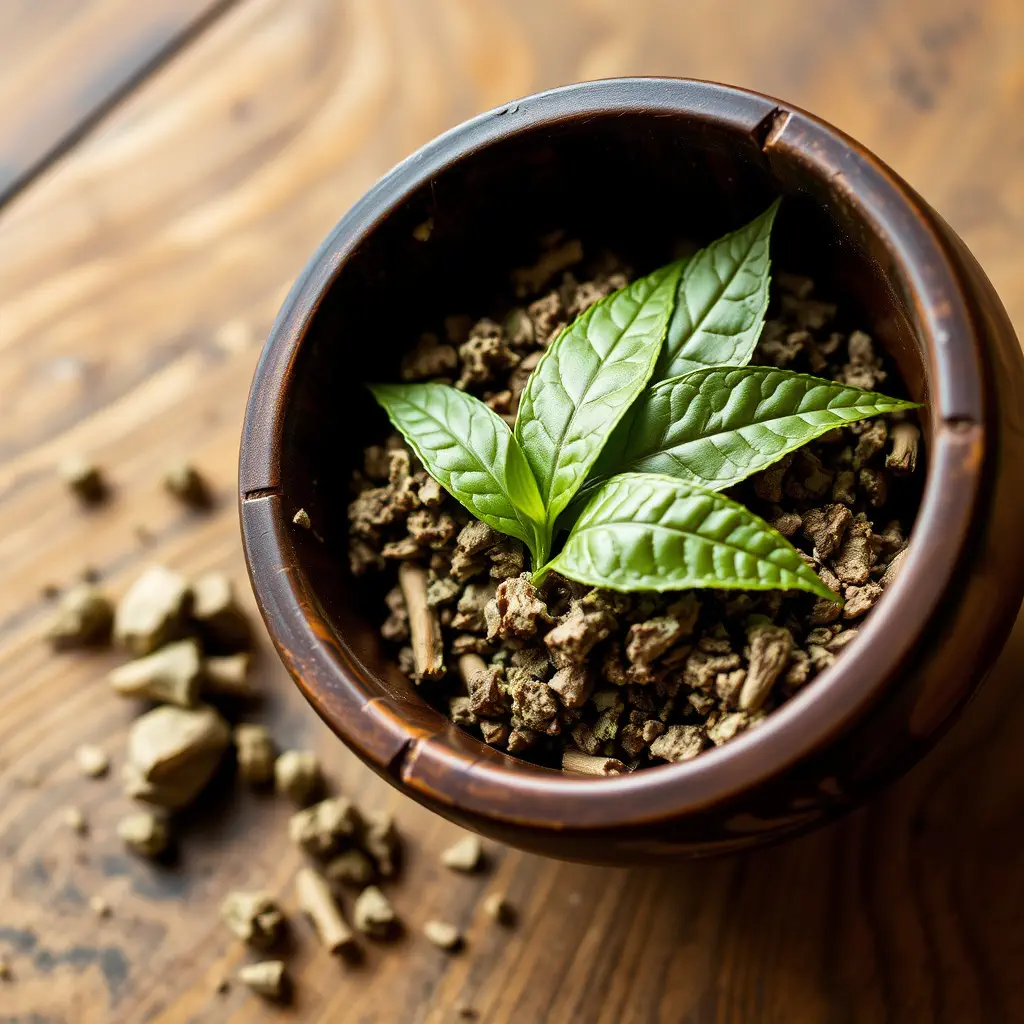Kratom, derived from the Mitragyna speciosa tree, has traditionally been used in Southeast Asia for its potential muscle-relaxing and calming effects. Its active compounds, such as mitragynine and 7-hydroxymitragynine, interact with opioid receptors in the brain to induce relaxation by reducing muscle tension and potentially alleviating stress. This natural remedy can be a safe alternative to synthetic medications for those experiencing chronic stress or persistent muscle tightness, though it's imperative to consult healthcare providers for personalized advice and to align its use with one's overall health strategy for optimal well-being. Kratom strains like Bali or Indo are particularly favored for their calming properties, which can be enhanced when combined with other relaxation techniques such as yoga, meditation, or aromatherapy in a tranquil environment. It is crucial to approach the use of kratom with caution due to its potency and potential long-term effects, ensuring safe and judicious use for effective muscle relaxation and stress relief within a holistic wellness routine.
Explore the transformative effects of incorporating kratom into your muscle relaxation routine, a practice that can lead to profound physical calmness. This article delves into the nuances of how kratom influences your body’s state of tranquility and offers insights on integrating it harmoniously with other wellness practices for sustained serenity. Discover the path to unwinding through muscle relaxation, understanding kratom’s impact, and cultivating a holistic approach to physical calmness promotion.
- Unwinding Through Muscle Relaxation: The Role of Kratom
- Understanding Kratom's Effects on Physical Calmness and Its Mechanisms
- Integrating Kratom into a Holistic Relaxation Routine for Lasting Tranquility
Unwinding Through Muscle Relaxation: The Role of Kratom

Engaging in activities that promote muscle relaxation with kratom can be a powerful tool for achieving a state of tranquility and relief from stress. Kratom, derived from the leaves of Mitragyna speciosa, has been traditionally used in certain Southeast Asian regions for its potential calming effects. When consumed responsibly, kratom can influence the brain’s opioid receptors, leading to a cascade of physiological responses that include relaxation of muscle tissue. This natural substance offers an alternative to synthetic medications often prescribed for muscle tension and stress-related conditions.
Incorporating kratom into a relaxation routine can be a pivotal element for those seeking to unwind. Its effects are not instantaneous; rather, they develop gradually, allowing individuals to ease into a state of calmness. The process of muscle relaxation with kratom begins with its interaction with the central nervous system, where it may help to alleviate discomfort and promote a sense of well-being. This can be particularly beneficial for individuals who experience chronic stress or have difficulty relaxing due to persistent muscle tension. As with any approach to relaxation and wellness, it’s important to consult with healthcare professionals before incorporating kratom into one’s regimen, ensuring its safe and effective use within the context of an overall health plan.
Understanding Kratom's Effects on Physical Calmness and Its Mechanisms

Kratom, a tropical tree native to Southeast Asia, has garnered attention for its potential effects on physical relaxation and the promotion of calmness. The alkaloids present in kratom leaves, primarily mitragynine and 7-hydroxymitragynine, are thought to interact with various neurological pathways, influencing both mood and physical sensations. When ingested, kratom can produce a range of effects, including muscle relaxation. This muscular relaxation is attributed to the alkaloids’ interaction with mu, delta, and kappa opioid receptors in the brain, which can lead to a reduction in muscle tension and an overall feeling of tranquility. The mechanism behind this relaxation is not fully understood but is thought to be mediated through these receptor interactions, which modulate pain perception and muscle tone. Users often report a sense of heaviness or numbness in the muscles, signaling the onset of relaxation.
The use of kratom for relaxation purposes is multifaceted, affecting not only muscle tension but also the body’s stress response. The effects of kratom can induce a state of calmness by activating the opioid receptors responsible for pain relief and mood elevation. This activation can counteract the stress hormones like cortisol, contributing to a sense of peace and well-being. Additionally, kratom’s impact on the neurotransmitter gamma-aminobutyric acid (GABA) may also contribute to its calming effects by inhibiting neuronal excitability and promoting relaxation. It is important for individuals considering using kratom for relaxation to approach it with caution, as the optimal dosage and its long-term effects on physical health can vary widely among users. Consulting healthcare professionals is recommended before integrating kratom into any wellness regimen to ensure safety and appropriateness of use.
Integrating Kratom into a Holistic Relaxation Routine for Lasting Tranquility

Incorporating Kratom into a holistic relaxation routine can be a beneficial approach for achieving lasting tranquility, particularly for those seeking muscle relaxation. Kratom, derived from the leaves of Mitragyna speciosa, has been traditionally used in certain regions to alleviate pain and promote a sense of well-being. When integrated thoughtfully into a daily routine aimed at relaxation, Kratom can play a pivotal role in mitigating muscle tension and discomfort. It’s important for individuals to select Kratom strains that are conducive to relaxation, such as Bali or Indo strains, which are known for their calming effects. These strains can help the body and mind enter a state of deep relaxation, facilitating a break from stressors and allowing the individual to experience a profound sense of calm.
Moreover, combining Kratom with other relaxation techniques such as yoga, meditation, or deep-breathing exercises can amplify its effects. Engaging in these practices encourages a holistic approach to muscle relaxation with kratom, fostering an environment where the body can release physical and mental tension. It’s crucial to create a serene setting for this routine, perhaps with soft lighting, ambient music, or gentle aromatherapy, to enhance the efficacy of the Kratom and to promote a sustained state of relaxation. By doing so, individuals can navigate their path toward lasting tranquility, ensuring that their holistic relaxation routine is both effective and restorative. As with any wellness practice, it’s advisable to consult with a healthcare provider before incorporating Kratom into one’s routine, especially considering individual differences in response to this substance.
Muscle relaxation with kratom emerges as a multifaceted approach to achieving and sustaining physical calmness. The article has explored how kratom can play a pivotal role in promoting tranquility, delving into its mechanisms and the integration of this compound into a comprehensive relaxation regimen. By understanding kratom’s effects on the body and mind, individuals can harness its potential to unwind and find respite from stressors. Embracing kratom as part of a holistic routine offers a pathway to long-lasting tranquility, suggesting that its inclusion in relaxation practices is a step towards a more serene daily life.






